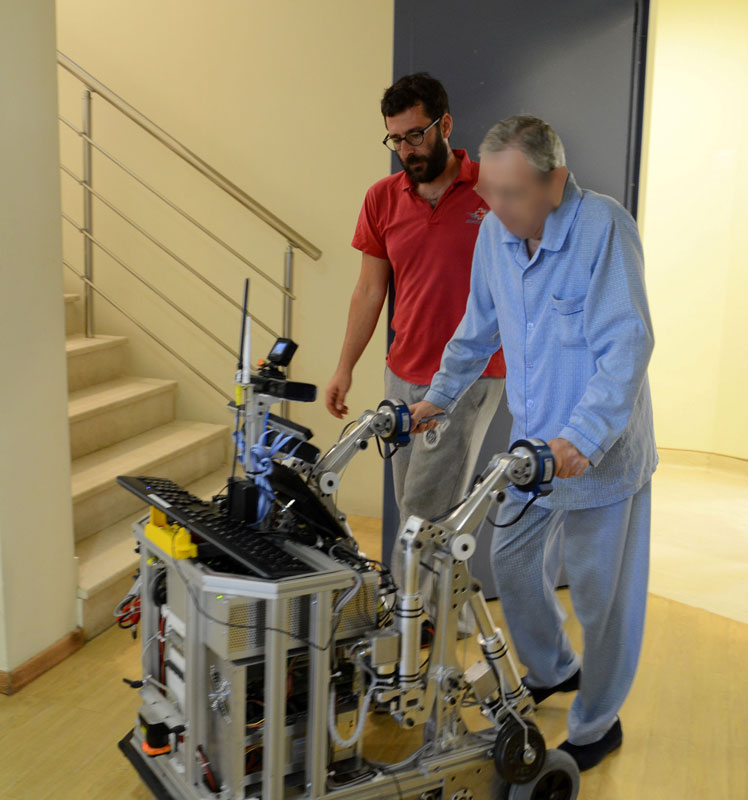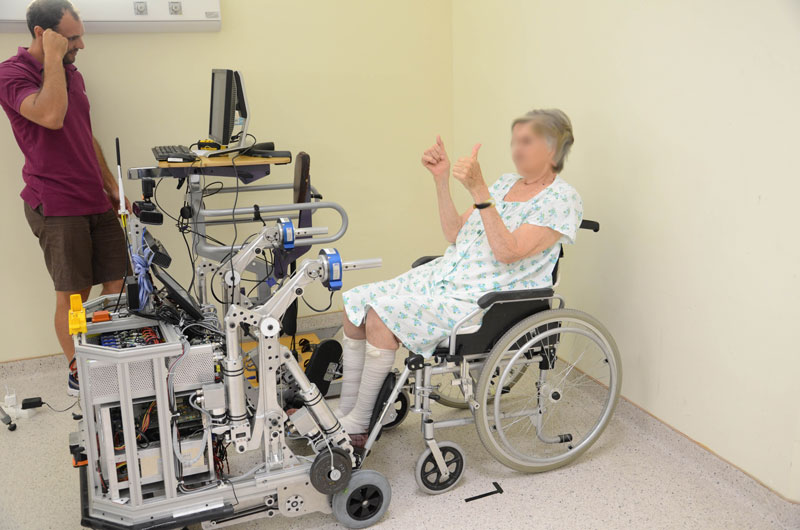by Eleni Efthimiou and Stavroula-Evita Fotinea (Athena RC)
ComBox incorporates a multimodal user-centred intelligent human-robot interaction (HRI) framework that uses different technologies and user modalities to create à-la-carte HRI solutions. Appropriate HRI approaches are likely to encourage user trust and acceptance of assistive robotic devices. ComBox is a methodological framework for developing multimodal human-machine interaction environments. It is being developed in the framework of multimodal interaction and robotics research at ILSP/Athena RC, and introduces a customable suite of user-centred HCI/HRI tools, enabling interaction via text, haptic, avatar and voice technology. Assistive robotics provides a major integration framework for ComBox, since the latter proposes an innovative model of user-centred human-machine interaction exploiting a set of modules that can be embedded to different product/service platforms in order to address different accessibility abilities and preferences [1]. Research on ComBox development is crucially directed by the growing geriatric population needs and the associated increased demands for managed healthcare in developed societies, conditions which are driving research in a range of domains, combining assistive robotics, the internet of things (IoT) and smart environments for the elderly.
In this context, human-like interaction has been identified as a critical factor for user acceptance and user trust of robotic devices. To serve the ComBox spectrum of interaction goals, we have been focusing on developing an intelligent multimodal dialogue management system, which is currently under development, that incorporates speech input/output technologies, sensorial data of behavioural patterns and affect features on conversational agent performance, enabling a closer to natural human-machine interaction adaptable to specific use contexts. Thus, ComBox advances the current state of the art in HRI, incorporating in its design cognitive support mechanisms and affect features, in combination with human behavioural patterns, to create more human-like interactions.

Figure 1: User navigating interaction during MOBOT rollator evaluation.

Figure 2: User audio-gestural interaction during MOBOT rollator evaluation.
ComBox builds upon many years’ experience in building advanced accessible Human-Computer Interaction (HCI) environments and significant effort gathering and annotating multimodal interaction data of elderly subjects in order to develop human-like HRI models, which have been positively validated by targeted user groups in real use environments, as in the case of the MOBOT [L1] rollator end-user evaluation [2]. Assistive robotic device evaluation/validation studies with the targeted user groups reveal a strong tendency for users to accept devices with human-like behavioural characteristics. Such characteristics are highly regarded, increasing user trust and willingness to use robotic products. Direct measurable benefits derived from regular device use include: better rehabilitation, reinforcement effects, socialisation support, help with daily activities and an increased ability to live independently. This happens because the aged user feels supported in executing everyday tasks, receiving information or being reinforced while interacting with the robotic device in a manner resembling human communication.
Our long term vision is to provide highly naturalistic à-la-carte interaction solutions adaptable to the wide spectrum of assistive robotics and smart environments. ComBox provides a user-centred intelligent interaction framework that enables à-la-carte interaction solutions, exploiting different technologies and user modalities [3] – characteristics that frequently appear in wish lists but are absent from the majority of solutions that reach the market.
Market research and user evaluation measures reveal that, at this stage, few solutions integrate limited sign language features to support deaf accessibility worldwide, and even voice- and gesture- based communication is rarely found in devices addressing aging and/or rehabilitation.
The components of the ComBox tool suite for human-like HRI have been designed based on input from corpus research on multimodal human communication in various contexts, while several tools addressing different modalities of interaction and user group communication needs have undergone extensive end-user evaluation as independent modules in collaboration with the IRAL group at SECE-NTUA and DIAPLASIS rehabilitation centre.
The short-term goal of ComBox is to offer a multimodal dialogue management system which builds multimodal human-machine dialogues exploiting communication via text, speech and gesture for transmission of system messages and acquisition of user feedback, incorporating avatar technology for information presentation in suitable contexts (i.e., user psychological support via reinforcement or affect-rich messages, sign language messages, etc). GUIs entail screen design based on personalised accessibility facilities to cover different interaction needs.
The long term goal is to offer advanced user-centred HCI/HRI solutions suitable for mounting to various devices/services in the context of AAL, IoT and the Smart City, directing research towards integrated interaction solutions which opt to address seniors with mobility/cognitive impairments and other pathologies, their carers and specialised health professionals.
Link:
[L1]: http://www.mobot-project.eu/
References:
[1] M. Turk: “Multimodal interaction: A review”, Pattern Recognition Letters, 36:189–195, 2014. DOI: 10.1016/j.patrec.2013.07.003
[2] Y. Koumpouros et al.: “User Evaluation of the MOBOT rollator type robotic mobility assistive device”, Technologies, 5, 73, 2017; DOI:10.3390/technologies5040073 2.
[3] L. Garçon et al.: “Medical and Assistive Health Technology: Meeting the Needs of Aging Populations”. Gerontologist, 56: 293–302, 2016.
Please contact:
Eleni Efthimiou, Athena RC, Greece
+302106875356,











